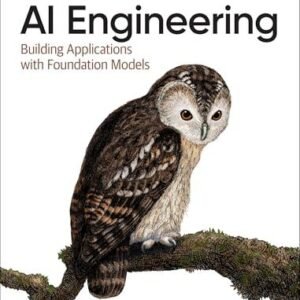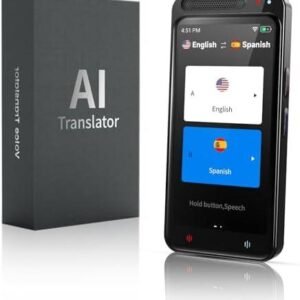In an increasingly interconnected world, proficiency in multiple languages is more than just a valuable skill—it’s a gateway to understanding diverse cultures, enhancing career prospects, and expanding personal horizons. As language learners seek effective ways to master new languages, technology has stepped in to provide innovative solutions. Among these solutions, artificial intelligence (AI) tools stand out for their ability to offer personalized learning experiences, instantaneous feedback, and interactive engagement. In this article, we will explore the top AI-driven tools designed to elevate your language learning journey, unlocking new skills and opportunities along the way. Whether you’re a beginner just starting to embark on this exciting path or an experienced learner aiming to refine your fluency, these cutting-edge resources can support and sustain your passion for languages like never before. Let’s dive into the realm of AI and discover how these tools can transform your learning experience!
Table of Contents
- Exploring the Benefits of AI in Language Acquisition
- Innovative AI Tools for Personalized Vocabulary Building
- Enhancing Pronunciation and Conversation Skills with Technology
- Integrating AI into Your Language Learning Routine for Maximum Impact
- Wrapping Up
Exploring the Benefits of AI in Language Acquisition
The integration of Artificial Intelligence in language acquisition has revolutionized the way learners interact with new languages. Through personalized learning experiences, AI tools offer tailored recommendations based on individual progress and preferences, allowing learners to engage at their own pace. This technology adapts to various learning styles, utilizing techniques such as adaptive quizzes, interactive exercises, and real-time feedback to enhance understanding and retention. With the aid of AI, learners can access a wealth of resources, ensuring that their language practice is diverse and effective, leading to accelerated proficiency.
Furthermore, AI-driven chatbots and conversational agents simulate real-life conversations, providing learners with a safe space to practice speaking without the fear of judgment. These tools not only encourage practical usage of language skills but also help in building confidence. In addition, platforms powered by natural language processing can analyze a learner’s input, offering constructive feedback on pronunciation, grammar, and vocabulary usage. Collectively, these advancements foster a more engaging and interactive environment for language acquisition, promoting continuous development in linguistic capabilities.
Innovative AI Tools for Personalized Vocabulary Building
In the quest for language mastery, personalized vocabulary building has become paramount, and innovative AI tools are at the forefront of this evolution. These platforms utilize advanced natural language processing algorithms to tailor vocabulary lists and exercises to individual learning styles and preferences. Not only do they analyze user interactions and progress, but they also harness data-driven insights to deliver customized challenges and feedback. This results in a more effective and engaging learning experience, allowing users to significantly expand their lexicons with tools that adapt to their unique linguistic journeys.
Among the most effective AI tools are apps that incorporate gamification elements, motivating learners through interactive quizzes and competitions. Features such as contextual flashcards, which use real-life examples to illustrate word usage, and spaced repetition systems that optimize retention rates, contribute to a vibrant learning environment. Here’s a snapshot of some leading options in the field:
| Tool | Key Features | Best For |
|---|---|---|
| Quizlet | Interactive flashcards, games, and quizzes | Visual learners |
| Memrise | Spaced repetition, videos of native speakers | Listening & pronunciation practice |
| Duolingo | Gamified lessons, community support | Beginners looking for structure |
Enhancing Pronunciation and Conversation Skills with Technology
In today’s digital age, technology offers innovative solutions to enhance pronunciation and conversation skills, making language learning more accessible and engaging. Speech recognition software is one of the most effective tools, allowing learners to receive instant feedback on their pronunciation. Applications like Speechling and Elsa Speak use advanced algorithms to analyze speech patterns, helping users identify areas for improvement. With personalized practice sessions, learners can refine their accent and intonation, creating a more natural speaking style.
Moreover, language exchange platforms like Tandem and HelloTalk facilitate real-time conversations with native speakers, offering a practical environment to apply pronunciation skills. These apps promote an immersive learning experience by connecting users based on their language interests, enabling them to practice conversation in a supportive setting. Utilizing these technologies not only boosts confidence but also enriches vocabulary and cultural understanding, ultimately leading to more fluent and effective communication.
Integrating AI into Your Language Learning Routine for Maximum Impact
Incorporating AI into your language learning routine can significantly enhance efficiency and engagement. By leveraging the power of AI-driven tools, learners can immerse themselves in a personalized experience tailored to their individual needs. Chatbots, for instance, simulate conversations with native speakers, allowing students to practice in a pressure-free environment. Additionally, language learning apps powered by AI can analyze your progress and provide tailored exercises that target your weakest areas, ensuring you focus on what truly matters. Here are some popular AI-driven resources:
- Duolingo – Uses adaptive learning to customize lessons.
- Babbel – Focuses on real-life dialogues and scenario-based learning.
- Busuu – Offers feedback from native speakers leveraging AI.
Moreover, AI technologies facilitate immersive experiences that enhance retention and utilization of new language skills. For example, speech recognition software helps refine pronunciation by providing real-time feedback, while augmented reality apps can place you in interactive environments where you can practice vocabulary in context. To maximize the impact of these technologies, consider implementing the following strategies into your routine:
| Strategy | Description |
|---|---|
| Daily Practice | Allocate consistent time each day to interact with AI tools. |
| Set Specific Goals | Identify clear short-term and long-term language objectives. |
| Engage with Community | Utilize platforms where you can interact with fellow learners or native speakers. |
Wrapping Up
As we conclude our exploration of the top AI tools for unlocking language skills, it’s clear that technology is revolutionizing the way we learn languages. The advancements in artificial intelligence offer an unprecedented level of personalization, accessibility, and engagement, enabling learners to enhance their linguistic abilities at their own pace. Whether you are a complete beginner or looking to polish your fluency, these tools cater to diverse learning styles and preferences, making language acquisition not just effective but also enjoyable.
Embracing these innovative resources can significantly enrich your learning experience, providing valuable practice through interactive exercises, real-time feedback, and immersive environments. As you embark on this linguistic journey, remember that consistency, practice, and the right tools can lead to remarkable progress.
We encourage you to explore the AI tools discussed in this article and find the right fit for your unique learning needs. Start harnessing these technologies today, and watch as your language skills flourish. Happy learning!





